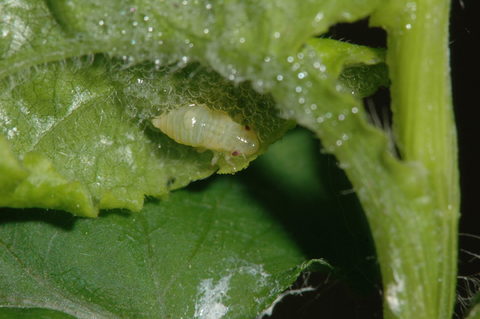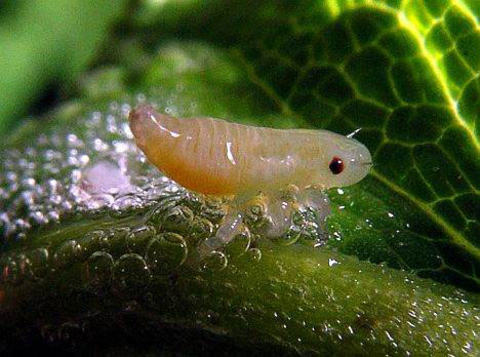Quick facts
- Spittlebugs are known for the frothy spittle mass they produce while feeding on plants.
- They feed on a variety of plants like ornamental grasses, roses, chrysanthemums, clover, strawberries, herbs and many other garden plants.
- Spittlebug nymphs pierce the plant stems and suck plant juices.
- In most cases, especially on annuals and perennials, spittlebug feeding is not damaging to plants.
- If too many spittlebugs are present, feeding can cause leaves to lose their shape.
Spittlebugs are common in Minnesota gardens. Of the 54 spittlebug species known in Minnesota, the most common is the meadow spittlebug (Philaenus spumarius).
How to identify spittlebugs
The presence of 'spittle' is an easy way to identify spittlebugs. These spittle masses can be up to 3/4 inch in size.
Nymphs
- The nymphs are inside the spittle masses.
- They have soft, elongated bodies up to 1/4 inch long.
- They change from orange to yellow to green as they grow.
- Nymphs have large red eyes on the sides of their heads.
Adults
Adult meadow spittlebugs are 1/4 inch long but are not usually seen.
- They start out green and then turn brown or grey.
- Adult spittlebugs, also called froghoppers, have enlarged hind legs for jumping.
- They are similar to leafhoppers but are fatter.
Biology
- Spittlebugs eggs can live through the winter in leaf litter.
- Nymphs come out in late April or early May and start feeding at the base of the plants. They keep moving up, to look for tender leaves and flowers.
- Nymphs pump bubbles into fluid that is secreted as a foamy substance during feeding. This frothy mass protects spittlebugs from enemies and from drying out.
- The nymphs mature in five to eight weeks. As adults they move to nearby grassy areas, pastures or areas with broadleaf weeds.
- The females return in September and October and lay clusters of eggs in plant debris or in leaves and stems. There is only one generation per year.
Spittlebug management
Monitoring spittlebugs
In late April or early May, check every two weeks for spittlebug foam and nymphs at the base of the plants. As the plants grow, look for them on the underside of young leaves.
Managing spittlebugs is unnecessary
- They are found in very small numbers.
- They are seen on the plants for a very short time.
- They cause very little damage.
To get rid of spittlebugs
- Remove weeds near your gardens to remove one of their food sources.
- Physically remove them by hand.
- Spray them with a strong blast of water to dislodge nymphs from the plants.
- Pesticides are not effective against spittlebugs as the nymphs are protected inside their spittle masses from any pesticide sprays.
Reviewed in 2022





